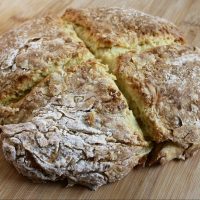Few foods offer as much versatility as chicken wings. While the classic Buffalo style remains iconic, there is an endless array of recipes that highlight different flavors and techniques. Sweet and sticky teriyaki, smoky barbecue, tangy lemon pepper, and fiery chili garlic are just a few options that keep fans coming back for more.
The Origins of Wings as a Utilization of a By-Product
The story of chicken wings is one of resourcefulness and culinary creativity. In the early to mid-20th century, wings were often considered an undesirable cut of poultry, typically set aside for making stock or discarded entirely. They were inexpensive, tough, and offered little meat compared to other parts of the bird. However, their transformation into a sought-after menu item began in Buffalo, New York, during the 1960s.
The now-famous Buffalo wing was born when a restaurant owner, faced with extra wings, decided to fry them deep and toss them in a spicy, buttery sauce. This innovation turned what was once a by-product into a flavorful snack that quickly gained popularity. Their small size made them perfect for sharing, and their crispy exterior paired well with a variety of dipping sauces.
From humble beginnings, wings evolved into a staple of bars, sports events, and casual dining establishments. They showcased how creativity in the kitchen could take something overlooked and transform it into a beloved culinary phenomenon. Today, they are celebrated not just as an appetizer, but as a main dish in countless styles and flavors worldwide.
The Variety of Recipes with Wings
Few foods offer as much versatility as chicken wings. While the classic Buffalo style remains iconic, there is an endless array of recipes that highlight different flavors and techniques. Sweet and sticky teriyaki, smoky barbecue, tangy lemon pepper, and fiery chili garlic are just a few options that keep fans coming back for more.
Cooking methods also vary—deep frying produces a crisp, golden exterior, while baking or air frying delivers a lighter version without sacrificing too much crunch. Grilled wings bring a smoky depth that pairs beautifully with dry rubs or marinades, making them a favorite for outdoor cooking enthusiasts.
Regional influences play a significant role as well. Korean-style wings might be double-fried and coated in a gochujang glaze, while Caribbean variations incorporate jerk seasoning for bold, aromatic heat. The adaptability of this dish means it can fit into nearly any cuisine, making it an exciting choice for chefs and home cooks alike.
From casual gatherings to elevated menus, wings prove that a single cut of meat can be endlessly reinvented, offering something for every taste and occasion.
The Plain Wings Recipe
Sometimes, simplicity is the ultimate expression of flavor. Plain wings, with no elaborate sauces or seasonings, allow the natural taste of the chicken to shine through. The recipe begins with fresh, meaty pieces, patted dry to encourage even cooking and crisp skin. A light coating of oil and perhaps a touch of salt and pepper are all that’s needed before they are cooked to perfection.
Baking at high heat or air frying can create a crisp skin while keeping the meat juicy. The absence of heavy sauces means the flavor relies on the quality of the chicken itself, making sourcing fresh, well-raised poultry important.
Plain wings are incredibly versatile—they can be served as they are for a clean, pure taste, or presented alongside dipping sauces for added variety. They also provide a neutral base for anyone who wants to customize their plate with their preferred flavors, from spicy to sweet.
This minimalist approach highlights how sometimes less truly is more, especially when the focus is on quality and technique.
Healthy Versions of Wing Recipes
While wings have a reputation for being indulgent bar food, healthier versions are widely available and just as satisfying. The cooking method plays a significant role—baking, air frying, or grilling can dramatically reduce the fat content compared to deep frying. These methods still produce crisp skin while avoiding excessive oil.
Seasonings and sauces also impact nutritional value. Using fresh herbs, citrus, and spices instead of heavy, sugar-laden glazes can add flavor without unnecessary calories. Yogurt-based dips, salsa, or homemade vinaigrettes make excellent accompaniments that keep things light.
Choosing high-quality poultry, ideally from free-range or organic sources, can enhance both flavor and nutrition. Leaner cuts with less skin can also be an option for those watching fat intake. Portion control matters, too—pairing wings with salads, roasted vegetables, or whole grains creates a balanced meal.
Healthy wing recipes prove that this dish can be enjoyed without guilt. By making mindful choices in preparation and presentation, it’s possible to savor the experience while still aligning with a health-conscious lifestyle.
Plain Garlic Roasted Wings
Ingredients
- 32 oz wings chicken wings
- 1 Tbl Garlic minced (either fresh or in oil)
Instructions
- Wash wings in cold water, separate wings into 3 parts, wingtip, midsection and, drummette
- Combine remaining garlic and salt and pepper combine with chicken, let marinade minimum 6 hours
- Place chicken wings on a sprayed sheet pan or cookie sheet
- Bake at 375 until, cooked
- In a skillet take hot wings and brown in a slightly oiled pan, or fry in a 375 fryer for 2 – 3 minutes until crispy






